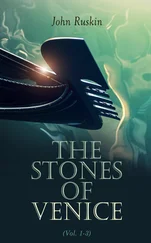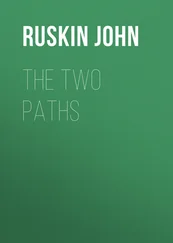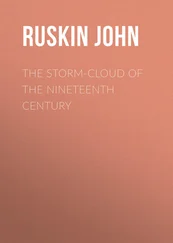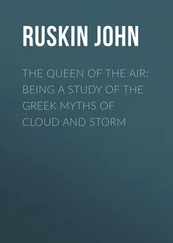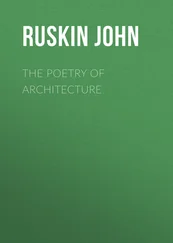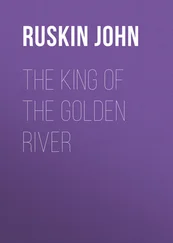John Ruskin - On the Old Road, Vol. 2 (of 2)
Здесь есть возможность читать онлайн «John Ruskin - On the Old Road, Vol. 2 (of 2)» — ознакомительный отрывок электронной книги совершенно бесплатно, а после прочтения отрывка купить полную версию. В некоторых случаях можно слушать аудио, скачать через торрент в формате fb2 и присутствует краткое содержание. Жанр: foreign_antique, foreign_home, literature_19, visual_arts, на английском языке. Описание произведения, (предисловие) а так же отзывы посетителей доступны на портале библиотеки ЛибКат.
- Название:On the Old Road, Vol. 2 (of 2)
- Автор:
- Жанр:
- Год:неизвестен
- ISBN:нет данных
- Рейтинг книги:3 / 5. Голосов: 1
-
Избранное:Добавить в избранное
- Отзывы:
-
Ваша оценка:
- 60
- 1
- 2
- 3
- 4
- 5
On the Old Road, Vol. 2 (of 2): краткое содержание, описание и аннотация
Предлагаем к чтению аннотацию, описание, краткое содержание или предисловие (зависит от того, что написал сам автор книги «On the Old Road, Vol. 2 (of 2)»). Если вы не нашли необходимую информацию о книге — напишите в комментариях, мы постараемся отыскать её.
On the Old Road, Vol. 2 (of 2) — читать онлайн ознакомительный отрывок
Ниже представлен текст книги, разбитый по страницам. Система сохранения места последней прочитанной страницы, позволяет с удобством читать онлайн бесплатно книгу «On the Old Road, Vol. 2 (of 2)», без необходимости каждый раз заново искать на чём Вы остановились. Поставьте закладку, и сможете в любой момент перейти на страницу, на которой закончили чтение.
Интервал:
Закладка:
199. Secondly. The museum is to manifest to these simple persons the beauty and life of all things and creatures in their perfectness. Not their modes of corruption, disease, or death. Not even, always, their genesis, in the more or less blundering beginnings of it; not even their modes of nourishment, if destructive; you must not stuff a blackbird pulling up a worm, nor exhibit in a glass case a crocodile crunching a baby.
Neither must you ever show bones or guts, or any other charnel-house stuff. Teach your children to know the lark's note from the nightingale's; the length of their larynxes is their own business, and God's.
I cannot enough insist upon this point, nor too solemnly. If you wish your children to be surgeons, send them to Surgeons' College; if jugglers or necromancers, to Messrs. Maskelyne and Cooke; and if butchers, to the shambles: but if you want them to lead the calm life of country gentlemen and gentlewomen, manservants and maidservants, let them seek none of Death's secrets till they die. Ever faithfully and affectionately yours,
J. R. Easter Tuesday, 1880.Dear –,
200. I must enter to-day somewhat further on the practical, no less than emotional, reason for the refusal of anatomical illustrations to the general public.
It is difficult enough to get one clear idea into anybody, of any single thing. But next to impossible to get two clear ideas into them, of the same thing. We have had lions' heads for door-knockers these hundred and fifty years, without ever learning so much as what a lion's head is like. But with good modern stuffing and fetching, I can manage now to make a child really understand something about the beast's look, and his mane, and his sullen eyes and brindled lips. But if I'm bothered at the same time with a big bony box, that has neither mane, lips, nor eyes, and have to explain to the poor wretch of a parish schoolboy how somehow this fits on to that, I will be bound that, at a year's end, draw one as big as the other, and he won't know a lion's head from a tiger's—nor a lion's skull from a rabbit's. Nor is it the parish boy only who suffers. The scientific people themselves miss half their points from the habit of hacking at things, instead of looking at them. When I gave my lecture on the Swallow 6 6 In 1873. See the second lecture of Love's Meinie .—Ed..
at Oxford, I challenged every anatomist there to tell me the use of his tail (I believe half of them didn't know he had one). Not a soul of them could tell me, which I knew beforehand; but I did not know, till I had looked well through their books, how they were quarreling about his wings! Actually at this moment (Easter Tuesday, 1880), I don't believe you can find in any scientific book in Europe a true account of the way a bird flies—or how a snake serpentines. My Swallow lecture was the first bit of clear statement on the one point, and when I get my Snake lecture published, you will have the first extant bit of clear statement on the other; and that is simply because the anatomists can't, for their life, look at a thing till they have skinned it.
201. And matters get worse and worse every hour. Yesterday, after writing the first leaf of this note, I went into the British Museum, and found a nasty skeleton of a lizard, with its under jaw dropped off, on the top of a table of butterflies—temporarily of course—but then everything has been temporary or temporizing at the British Museum for the last half-century; making it always a mere waste and weariness to the general public, because, forsooth, it had always to be kept up to the last meeting of the Zoological Society, and last edition of the Times . As if there had not been beasts enough before the Ark to tell our children the manners of, on a Sunday afternoon!
202. I had gone into the Museum that day to see the exact form of a duck's wing, the examination of a lively young drake's here at Coniston having closed in his giving me such a cut on the wrist with it, that I could scarcely write all the morning afterwards. Now in the whole bird gallery there are only two ducks' wings expanded, and those in different positions. Fancy the difference to the mob, and me, if the shells and monkey skeletons were taken away from the mid-gallery, and instead, three gradated series of birds put down the length of it (or half the length—or a quarter would do it—with judgment), showing the transition, in length of beak, from bunting to woodcock—in length of leg, from swift to stilted plover—and in length of wing, from auk to frigate-bird; the wings, all opened, in one specimen of each bird to their full sweep, and in another, shown at the limit of the down back stroke. For what on earth—or in air—is the use to me of seeing their boiled sternums and scalped sinciputs, when I'm never shown either how they bear their breasts—or where they carry their heads?
Enough of natural history, you will say! I will come to art in my next letter—finishing the ugly subject of this one with a single sentence from section ix. of the "Tale of a Tub," commending the context of it to my friends of the Royal Academy.
"Last week, I saw a woman flayed, and you will hardly believe how much it altered her person for the worse."—Ever, my dear –, affectionately yours,
J. R. 7th April, 1880.My Dear –,
203. I suppose that proper respect for the great first principles of the British Constitution, that every man should do as he pleases, think what he likes, and see everything that can be seen for money, will make most of your readers recoil from my first principle of Museum arrangement,—that nothing should be let inside the doors that isn't good of its sort,—as from an attempt to restore the Papacy, revive the Inquisition, and away with everybody to the lowest dungeon of the castle moat. They must at their pleasure charge me with these sinister views; they will find that there is no dexter view to be had of the business, which does not consist primarily in knowing Bad from Good, and Right from Wrong. Nor, if they will condescend to begin simply enough, and at the bottom of the said business, and let the cobbler judge of the crepida, and the potter of the pot, will they find it so supremely difficult to establish authorities that shall be trustworthy, and judgments that shall be sure.
204. Suppose, for instance, at Leicester, whence came first to us the inquiry on such points, one began by setting apart a Hunter's Room, in which a series of portraits of their Master's favorites, for the last fifty years or so, should be arranged, with certificate from each Squire of his satisfaction, to such and such a point, with the portrait of Lightfoot, or Lucifer, or Will o' the Wisp; and due notification, for perhaps a recreant and degenerate future, of the virtues and perfections at this time sought and secured in the English horse. Would not such a chamber of chivalry have, in its kind, a quite indisputable authority and historical value, not to be shaken by any future impudence or infidelity?
Or again in Staffordshire, would it not be easily answered to an honest question of what is good and not, in clay or ware, "This will work, and that will stand"? and might not a series of the mugs which have been matured with discrimination, and of the pots which have been popular in use, be so ordered as to display their qualities in a convincing and harmonious manner against all gainsayers?
205. Nor is there any mystery of taste, or marvel of skill, concerning which you may not get quite easy initiation and safe pilotage for the common people, provided you once make them clearly understand that there is indeed something to be learned, and something to be admired, in the arts, which will need their attention for a time; and cannot be explained with a word, nor seen with a wink. And provided also, and with still greater decision, you set over them masters, in each branch of the arts, who know their own minds in that matter, and are not afraid to speak them, nor to say, "We know," when they know, and "We don't know," when they don't.
Читать дальшеИнтервал:
Закладка:
Похожие книги на «On the Old Road, Vol. 2 (of 2)»
Представляем Вашему вниманию похожие книги на «On the Old Road, Vol. 2 (of 2)» списком для выбора. Мы отобрали схожую по названию и смыслу литературу в надежде предоставить читателям больше вариантов отыскать новые, интересные, ещё непрочитанные произведения.
Обсуждение, отзывы о книге «On the Old Road, Vol. 2 (of 2)» и просто собственные мнения читателей. Оставьте ваши комментарии, напишите, что Вы думаете о произведении, его смысле или главных героях. Укажите что конкретно понравилось, а что нет, и почему Вы так считаете.

